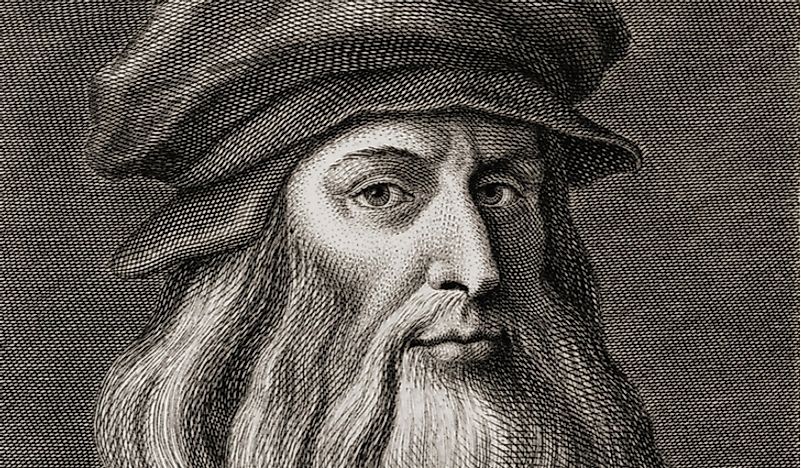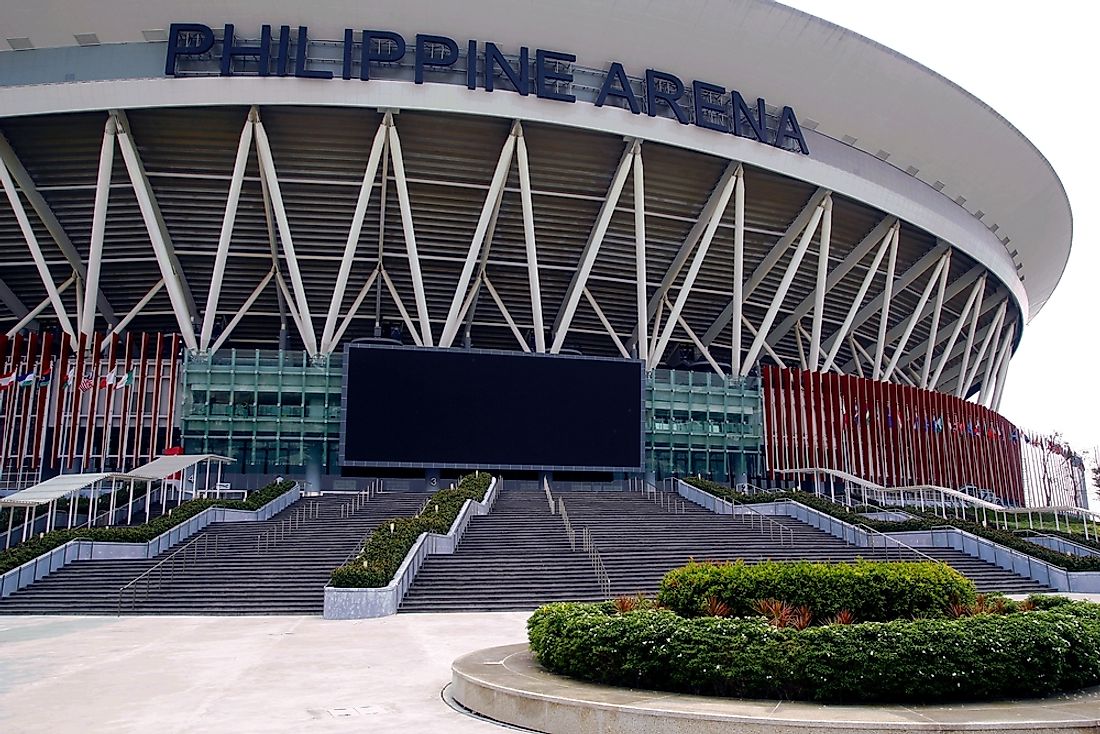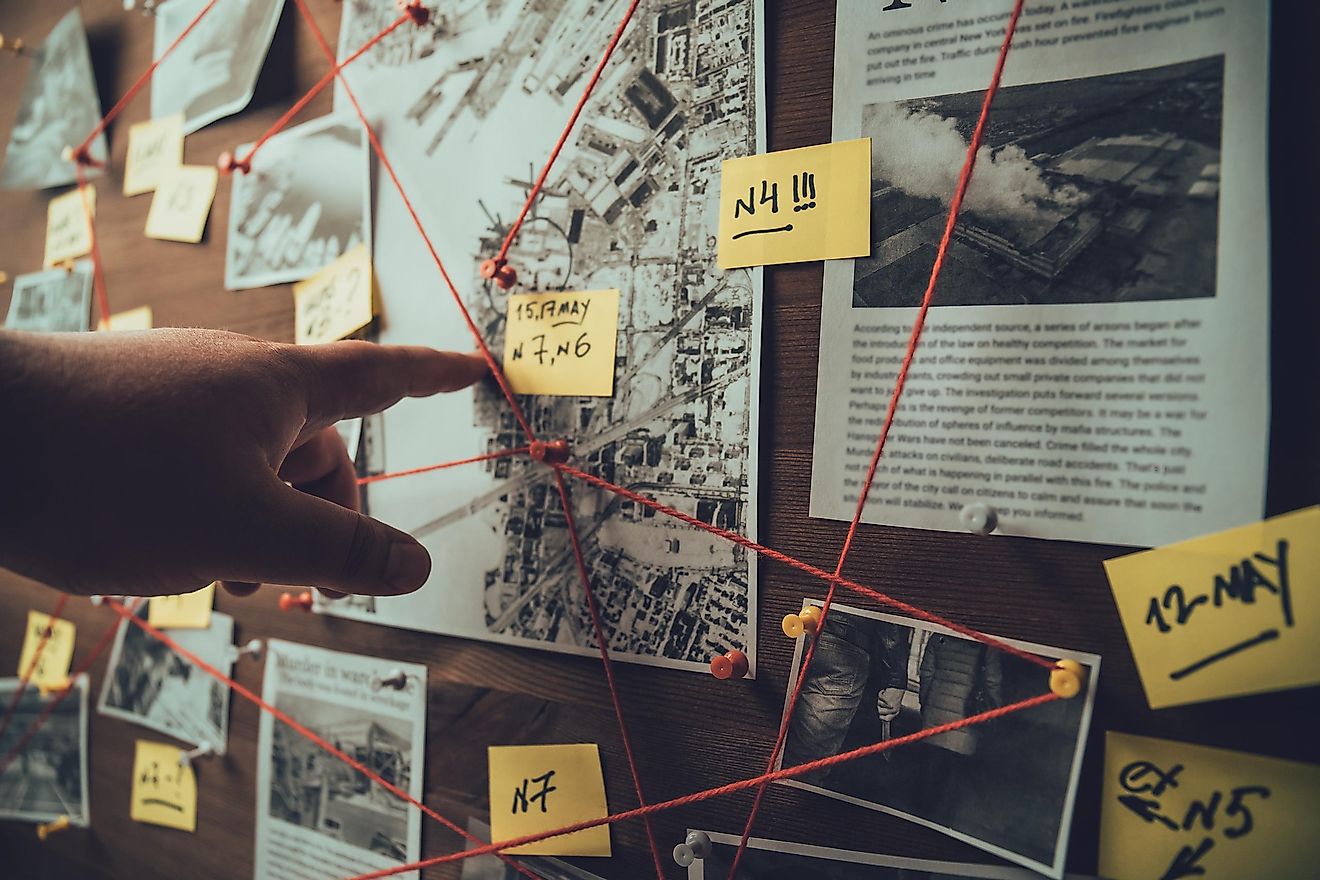Leonardo da Vinci – Important Figures in History

Leonardo da Vinci was an ordinary man from Italy who possessed the extraordinary ability to grasp knowledge in numerous fields. He was a painter, architect, botanist, mathematician, inventor, engineer, sculptor, writer, geologist, an all-around genius. Several of his pieces of art are priceless and critically acclaimed including the Mona Lisa (the most famous painting of all time) and The Last Supper (the most reproduced religious painting in history).
5. Early Life
Leonardo di ser Piero da Vinci was born on April 15, 1452 in a small town Vinci, Republic of Florence (Italy). He was born to Messer Piero Frusino di Antonio da Vinci who was a legal notary and Caterina who was a servant and possibly even a slave brought to Italy from the Middle East. Leonardo da Vinci was born out-of-wedlock. He spent his childhood in a small town of Anchiano with his mother but later moved to live with his father, step-mother, grandparents, and uncle in Vinci where he learned basic arithmetic, reading, and writing. Da Vinci also studied Latin briefly.
4. Career
Leonardo da Vinci began to practice his artistic talent at the age of 14. He worked as an apprentice for an established artist known as Andrea di Clone (or Verrocchio) for seven years. It was there where he was introduced to other fields such as chemistry, metal working, leather working, carpentry, and mechanics. Da Vinci’s famous painting “The Baptism of Christ” was painted in Verrocchio’s workshop and was a collaboration between him and Verrocchio. Many historians believe that Leonardo was used as the model for Verrocchio’s statue “David”. In 1472, the 20-year-old Da Vinci was accepted into the painters guild of Florence and left to work independently in 1481. In 1482, Leonardo da Vinci moved to Milan where he lived until 1499 when the Second Italian War caused him to flee the city and move to Venice. It was in Milan that Leonardo worked on his most popular masterpieces including “The Last Supper” and “The Virgin of the Rocks.” He later moved back to his homeland of Florence where he shifted his concentration to his mathematical studies, although he also worked on several paintings such as the Mona Lisa.
3. Major Contributions
Da Vinci made major contributions to the fields of science, mathematics, and the arts. He was also an influential inventor. He is famed with the painting of "Mona Lisa" which has been named the most famous painting of all time. He was also responsible for painting "the Last Supper" which is by far the most reproduced religious painting in history. He made deep investigations in topics such as zoology, botany, hydrodynamics, aerodynamics, geology, optics, human anatomy, and flight. Da Vinci made unique and innovative sketches of machines that were not available in his lifetime until hundreds of years later like the parachute, helicopters, underwater breathing apparatus, airplanes, and army tanks. He contributed to the design of weapons and his ideas of canals, steam powered cannons, and water wheels were astounding. Other contributions include sculpture, engineering, architecture, mathematics, literature, history, writing, and cartography.
2. Challenges
Da Vinci lived in a period where the Roman Catholic Church’s power was in its prime, and the Pope held more authority than the King, a fact which meant that Leonardo da Vinci could have been charged with heresy if any of his works were deemed to contravene Christian doctrines. That fear prevented him from applying several of his theories which he wrote down in semi codes. Da Vinci also had experienced family disputes with his half-siblings over the inheritance of the father’s property.
1. Death and Legacy
In his sunset years, Leonardo da Vinci lived in the Belvedere under the patronage of Pope Leo X and became a close friend of King Francis I. The king granted Leonardo residence in Clos Luce, a manor house near the royal Chateau d’Amboise. Leonardo da Vinci died in the manor house on May 2, 1519. Leonardo da Vinci is credited as being one of the key figures of the Renaissance Movement of the 16th century, and many of his theories have been used in modern technology such as the design of the battle tank as well as the helicopter. Many of his studies in the human anatomy were employed in the medical field several centuries after his death.











